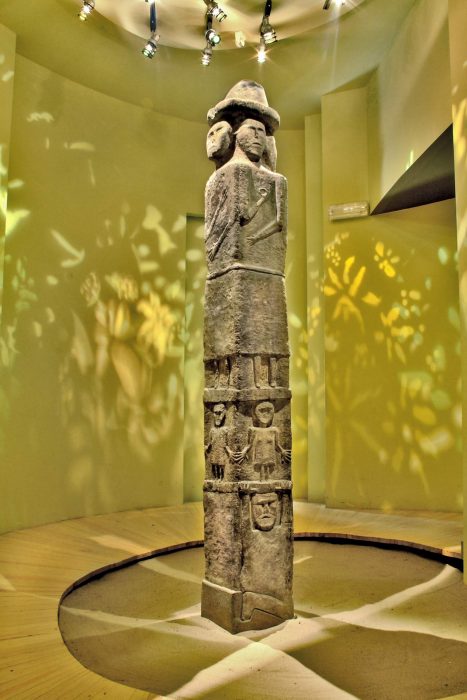In 1848, in Lychkivtsi (Ukrainian Личківці) estate near Husiatyn in Podolia, in the river Zbruch, a stone statue was discovered and then donated by Mieczysław Potocki to the Kraków Scientific Society. On 12th May 1851 the statue was brought to Kraków and exhibited in the hall of the Jagiellonian Library at 6 św. Anny street. Between 1858/1859, it was included in the first Antiquity Exhibition, and since then it has been the highlight of the museum collection.

The statue with a preserved height of 257 cm was made of limestone from Miodobory. It is a four-sided pillar with sides constituting a base for tiers with figural representations. At the top of the statue, there is a “hat” covering all four plastically formed, connected, hairless human heads set on short necks. Apart from division of the composition into four sides of the pillar, on all walls of different heights there are three horizontal tiers separated by plastic ledges.
Dividing the representations into three areas may reflect the ideas and beliefs of their creators about the surrounding world. The prominent place is taken by the four-headed god provided with various symbols, among which the most clear are the horn, the ring, the sword and the horse. They are interpreted as objects related to the god-warrior, who also guarantees prosperity and well-being (the horn) and protects against evil powers (the ring). It would be a universal god with power over all the forces of nature and over human life.
The earthly world is the middle strip; the method of presenting the figures is interpreted as a representation of a dancing parade. The work as a whole is supported by a three-headed figure interpreted as the ruler of the underground state. “Supporting” may have literal meaning here as well, as without it maintaining order in the world would not be possible.
The statue from Zbruch may constitute material proof of the idea of a cosmic axis, which provided the local community with perfect internal communication between the real world and the world of beliefs. It is an element which causes it to clearly stand out from the other Slavonic statues which imagined only one “level” of the cosmos and not – as in this case – the whole universe.
The statue from Zbruch is usually dated to the 10th or to the turn of the 9th and 10th centuries.
See also 12 exhibits within the COME-IN module!